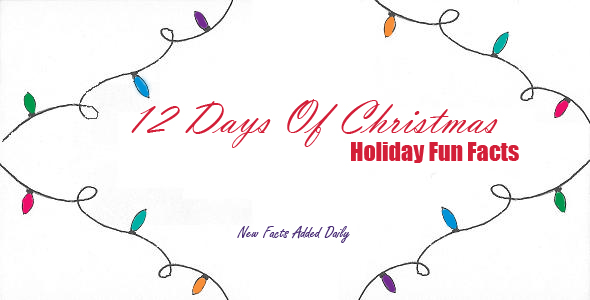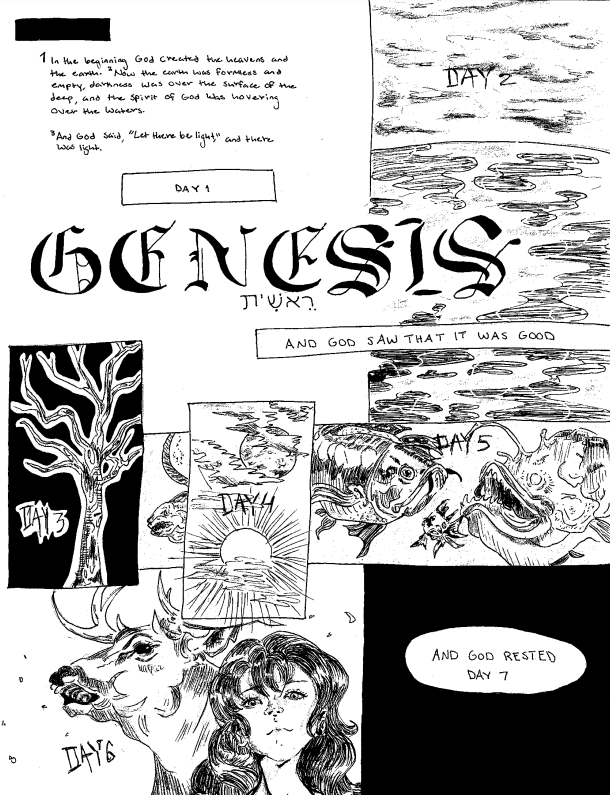Please enjoy this collection of 12 days of Christmas trivia compiled from internet sources.
Day 12
Rudolph’s story begins sometime in 1939. The nation was still in the midst of the Great Depression. In the Chicago headquarters of department store giant, Montgomery Ward, that summer, executives were making plans for the coming Christmas season. To save money they called upon Robert L. May, a 34 year-old. He worked on a story to hand out to kids. With the help of his daughter, May had created Rudolf after trying out many different names such as .
Unlike the Rudolph we now know from the song and cartoon, May’s original Rudolph lived an ordinary life with his parents in the woods. He did not live at the North Pole and his parents were not part of Santa’s reindeer team. Oh, Rudolph had to deal with the taunts of the other little reindeer who shunned him because he was different. Like May as a child, Rudolph was lonely and had few friends. But, rather than dwelling on his problems, Rudolph had a positive outlook on life and did not let his deformity hold him back.
In the original story, Rudolph’s big moment came when Santa landed his sleigh at Rudolph’s home to deliver gifts to him and the other good little reindeer in the neighborhood. As Santa landed a fog started to roll in. By the time Santa had finished delivering presents to the little reindeer in the area, the fog had become dense, making it impossible for Santa to take off safely. With children all over the world expecting him to visit and leave presents, Santa had a dilemma – he couldn’t see to take off in the fog but if he did not take off he would disappoint children all over the world. At that moment Santa noticed Rudolph with his shiny red nose and asked him to lead his sleigh. Rudolph agreed and Santa was able to make his deliveries. Following Santa’s successful Christmas Eve journey with Rudolph in the lead, the story ends with Santa saying to Rudolph, “By YOU last night’s journey was actually bossed. Without you, I’m certain we’d all have been lost!” It was different from the ending we all know where Rudolf goes down in history. The story soon caught the eye of a publisher and Rudolf became one of the biggest icons of Christmas today.
Day 11
Christmas lights are sold by the millions during Christmas times. Traditionally trees were decorated by the Germans with candles and apples and paper stars. They would be on the tree with melted wax but soon little lanterns were used with glass spheres. Albert Sadacca was fifteen in 1917, when he first got the idea to make safety Christmas lights for Christmas trees. A tragic fire in New York City involving Christmas tree candles inspired Albert to invent electric Christmas lights. His idea soon became a reality to what we have now wrapped around our Christmas trees.
Day 10
Most believe the Twelve days of Christmas is before Christmas itself. In fact, the song refers to the twelve days between the day of Jesus’ birth and the arrival of the Wise men. It starts Dec. 25 and continues through Jan. 6. Each day has its special meaning religiously. The song was said to be a teaching tool to instruct young people in the meaning of Christian faith. Since between 1558 to 1829, Catholics were not allowed to express their religion publicly, this song was a sneaky way to stay true to their beliefs.
In the first line “true love” refers to God, the one who loves all and “me” refers to the person who receives the presents, in other words man or people. “The partridge in a pear tree” was Jesus Christ. “Two turtle doves” are the Old and New Testaments. “Three French hens” were faith, hope, and love. “For calling birds” were the four Gospels in the New Testament which sing the song of salvation through Jesus Christ; Matthew, Mark, Luke, and John. “Five golden rings” were the first five books in the Bible; Genesis, Exodus, Leviticus, Numbers, and Deuteronomy. “Six geese a laying” were the six days of creation. “Seven swans a-swimming” were the seven gifts of the Holy Spirit: wisdom, understanding, counsel, fortitude, knowledge, piety, and fear of the Lord. “Eight maids a milking” were the eight beatitudes. “Nine ladies dancing” were nine fruits of the Holy Spirit: love, joy, peach, patience, kindness, goodness, faithfulness, gentleness and self-control. “Ten lords a leaping” are the Ten Commandments. “Eleven pipers piping” were the eleven faithful disciples. “Twelve drummers drumming” were the twelve points of the Apostles’ Creed.
Day 9
“Deck the halls with boughs of holly…” In Northern Europe, Christmas occurred during the middle of winter, when ghosts and demons could be heard howling in the winter winds. Boughs of holly, believed to have magical powers since they remained green through the harsh winter, were often placed over the doors of homes to drive evil away. Greenery was also brought indoors to freshen the air and brighten the mood during the long, dreary winter. Legend also has it that holly sprang from the footsteps of Christ as he walked the earth. The pointed leaves were said to represent the crown of thorns Christ wore while on the cross and the red berries symbolized the blood he shed.
Day 8
One of the most iconic symbols of Christmas is the Christmas tree. In the 7th century a monk from Crediton, Devonshire, went to Germany to teach the Word of God. Legend has it that he used the triangular shape of the Fir Tree to describe the Holy Trinity of God the Father, Son and Holy Spirit. The converted people began to revere the Fir tree as God’s Tree, as they had previously revered the Oak. The Germans would decorate their trees with apples and paper stars. Although, the first decorated tree was at Riga in Latvia, in 1510. In the early 16th century, Martin Luther is said to have decorated a small Christmas Tree with candles, to show his children how the stars twinkled through the dark night.
Day 7
Around 1610, tinsel was first invented in Germany made from genuine silver. Machines were invented that shredded silver into thin tinsel-sized strips. Silver tinsel tarnishes and loses its shine with time, eventually, artificial replacements were invented. The original inventor of tinsel remains unknown.
Day 6
The origin of the wreath is nearly unknown. The origin of the Christmas wreath dates back to the ancient cultures of the Persian Empire. During that time, wreaths were believed to be a symbol of importance as well as success. Somewhere around the 776 BC, Greeks started placing wreaths, made of laurel, on the head of the athletes who came first in the Olympic Games. The shift from the head to the door is not known with much accuracy. Some believe that the athletes would place them on his/her door to show off his/her trophies.
Day 5
Candy canes are both a sweet treat and unique tree ornament. The origin of theses striped candies lies in an event in Cologne Cathedra about 230 years ago. It was said that one evening, the children were being very loud at church and were not paying attention. The choirmaster gave them a long, white sugar candy stick to keep them settled but since giving out chocolates and candies at church was considered sacrilegious; he bent these sticks on one end to make them look like shepherds’ cane.
In 1847, a German-Swedish immigrant in Wooster, Ohio liked candy canes so much that he put them on his Christmas tree as decorations. The idea soon caught up and became quite a fashion. In 1900, candy canes started coming in red strips and peppermint flavoring and it was said that the white color was symbolic Christ’s purity while the red symbolized the wounds he suffered. The peppermint flavoring was said to represent the hyssop herb described in the Bible for purification.
Day 4
Kissing under the mistletoe comes from the legend of Goddess Frigga and her son Balder. Frigga was the Goddess of Love and her son was the God of the Summer Sun. Once, Balder dreamt of his death and worried, he told his mother. Frigga was so worried for her son and for the sake of the world, which without the sun would freeze and die, that she went everywhere and to every being in air, water, fire, and earth to promise that they would never harm her son.
Loki, the God of Evil, was the enemy of Balder and was aware that Frigga had overlooked one plant. It grew on apple and oak trees and was known as the mistletoe. Loki made an arrow and placed the Mistletoe at its tip. He then befriended the blind brother of Balder, Hoder, the God of Winter, and made him shoot Balder. Balder was immediately killed. Every creature tried to bring Balder back to life for three days but it was Frigga who managed to revive her son with the help of the Mistletoe. Her tears on the plant became pearly white berries and she blessed the plant. Anyone who stands under the mistletoe plant would never be harmed and would be entitled to a kiss as a token of love.
Day 3
Eggnog is common around Christmas time. In the 17th century a strong ale called “nog” was bery popular in Britain around the holidays. It was made from beer, sugar, egg yolks, lemon rinds and cinnamon. Later in the 19the century North Americans took the French version of the drink called “Lait de Poule”, made from milk, sugar, egg yolks, and added spices. Though most now don’t drink eggnog with alcohol, the recipe has been he same for over 150 years.
Day 2
Poinsettias are a native Mexican plant named after Joel R. Poinsett, U.S. ambassador to Mexico who brought the plant to America in 1828. The legend has it that a young Mexican boy, on his way to visit the village Nativity scene, realized he had no gift for the Christ child. He gathered pretty green branches from along the road and brought them to the church. He was mocked by the other children, but when the leaves were laid at the manager, a beautiful star-shaped flower appeared on each branch. The bright red petals, often mistaken for flowers, are actually the upper leaves of the plant.
Day 1
Many people refer to Christmas as Xmas, though most don’t even know what it means. The abbreviation is of Greek origin. The word for Christ in Greek is Xristos. During the 16th century, Europeans began using the first initial of Christ’s name, “X”, in place of the word Christ in Christmas. Later on, as the Greek language began to wane in popularity, many who did not understand Greek mistook the abbreviation as a sign of disrespect.
Christmas facts taken from internet resources including inventors.about.com/od/cstart and inventions/a/Xmas_Lights.htm













